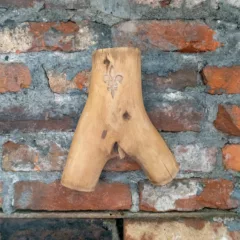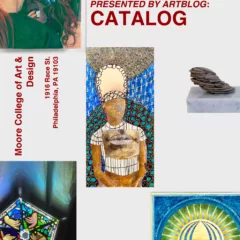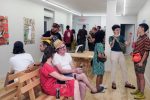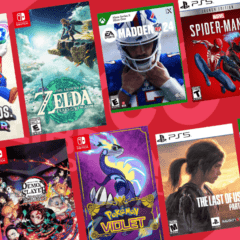Elizabeth talks with Alex Conner, founder and Director of Commonweal Gallery in person and later by email. The interview is edited for length, clarity and content.
Elizabeth Johnson: Did you grow up in Philadelphia?
Alex Conner: I grew up throughout southern New Jersey and have lived in Philadelphia for 14 years. I was born in Cumberland County, lived most of my life on my father’s tree farm in Salem County, and graduated high school from Gloucester County. My family is from the general area; there were Quakers on my mother’s side of the family. I received a B.A. in Near and Middle Eastern Studies and Sociology at Rutgers University, and a Post-Baccalaureate Certificate at PAFA and an M.F.A. at Moore College, both in Fine and Studio Arts.
EJ: Any artists in your family?
AC: While there are no fine artists in the family, the women on my maternal side have been very adept at fiber crafts for many generations. I get a sense of simplicity from my father and an interest in beauty from my mother. As a child I spent a lot of time outside working on the farm where I read a lot of poetry but didn’t write much. I’ve discovered over time that my talents are more focused on the organizational, social, and business side of art.
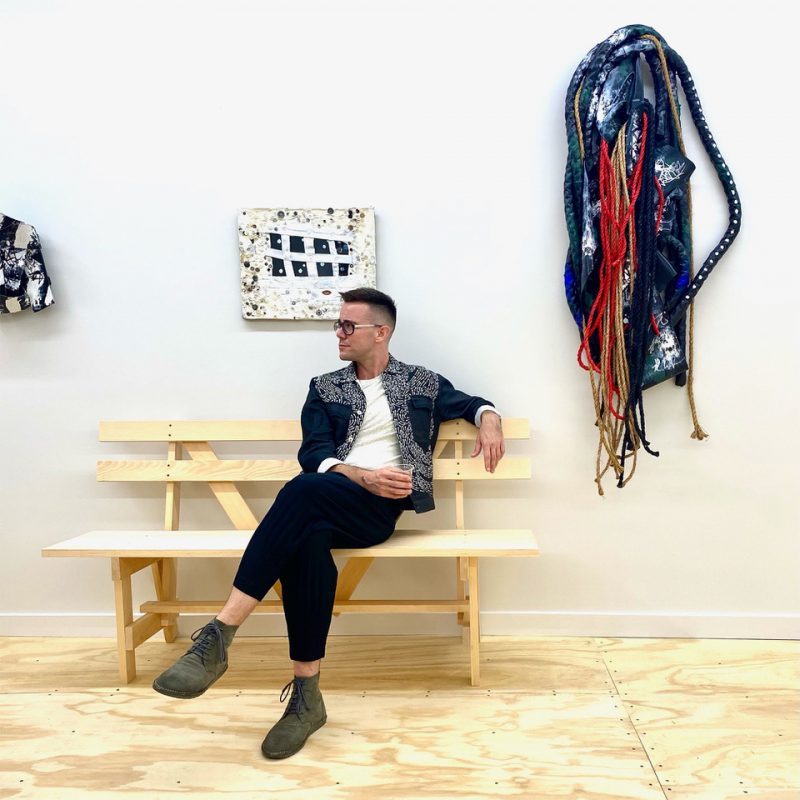
EJ: Why did you choose the name Commonweal?
AC: My intention was threefold. The first was that, based on the gallery’s focus on Philadelphia artists, I wanted the name to have some reference to our locality, either the city or the state. Commonweal is the root of the term commonwealth, and Pennsylvania is one of four US states designated as such. Secondly, I felt that the definition of commonweal––the common welfare or the public good––was infused through each part of the gallery’s programming, which focuses on building the careers of local emerging and mid-career artists. The gallery’s mission is rooted in developing and advancing a collector base in Philadelphia––and beyond––for Philadelphia artists. The third reason is that Commonweal was the title of a magazine first published by William Morris in 1885 that advocated for progressive social causes, amongst which was advancing the arts across all sectors of society, which is a goal of his I share. I’ve always been a bit of a fan of Morris. A quote of his is featured on the Commonweal shopping tote: “Have nothing in your house that you do not know to be useful or believe to be beautiful.”
EJ: You opened Commonweal in October of 2021. How have openings and sales fared during the pandemic? Mostly, the work seems to be reasonably priced. Is that intentional?
AC: The May 2022 opening, Commonweal welcomed over 300 people to the gallery. The street was packed. My last two shows in 2022 have been in the black and the gallery makes regular sales. The market in Philadelphia for emerging and mid-career contemporary art is $500-$5000, with most of the pieces falling between $1000-$3000. If an artist’s market could support higher prices, I would price it accordingly. I have done market research on Philadelphia that revealed that there are approximately ten thousand people in Philadelphia that fit the profile of a potential collector. Based on my fourteen years in the Philly artworld, I would estimate there are currently about 500 regular collectors that purchase two or more works of contemporary art a year.
EJ: Regarding cultivating new collectors: what do you talk to a new visitor about initially? Do you ask people if they are collecting already or have thought about it? I know this is your strength and you are sensitive to people’s cues. I am curious what you can share with our audience about what you have learned in cultivating collection.
AC: I talk to a new visitor like a person because that’s what they are. I’ve never had a great ability for artifice, so I just try and be myself and let my enthusiasm for and competency in the world of contemporary Philadelphia art and artists share itself. I don’t need to ask people if they are collecting as it will typically come out in conversation if it is something they already participate in or are interested in doing.
There is no “trick” to cultivating a collector. I can share why I am interested in this field, why I think it’s important and how and why I put my efforts behind building and running the gallery. I can talk with them about art. I can remind them that art can be difficult, but that’s simply because it is meant to reflect life, and sometimes it is from tackling difficult issues that we reap the greatest rewards. I talk about the high quality of work being produced in Philadelphia and how I try to find and shine a light on it. I talk about what it means to live with artwork: that it isn’t about placing some passive thing on the wall but instead the daily experience of meeting the artwork at different stages of your life and growing together, and through growing together, growing better.
EJ: What was here before you renovated and established a gallery space? Do you plan to do group shows or stick with the two-artist format?
AC: George Baker Florist was in this space for thirty-five years. For this coming year the gallery will feature two-person, group, and solo shows. I have exhibitions planned through the end of June 2023. In October, I will open a group show Public•Private that is inspired by the following Virginia Woolf quote from Three Guineas:
“The public and private worlds are inseparably connected . . . the tyrannies and servilities of one are the tyrannies and servilities of the other.”
This exhibition will feature Akiko Jackson, Alex Rosenberg, Emilio Maldonado, and Misha Wyllie, and will run concurrent with CraftNOW’s annual symposium Public|Private, that is structured around the same theme. The exhibition will open October 21st and run through November 26th. In December, Marian Bailey will have a solo exhibition. In January, curator Tally de Orellana will be curating a cross-generational exhibition of female Philadelphia artists.
EJ: Who made the DIY-looking gallery furniture?
AC: Carl Durkow, a local designer, created my desk. The rest of the furniture at the gallery are the designs of Enzo Mari,featured in his 1974 book, Autoprogettazione, and were fabricated by a local woodworking company.
EJ: Do you engage with other galleries?
AC: I am working with the Philadelphia Gallery Society (PhGS) that is just getting started. My involvement has been to bring individual commercial gallery owners together and facilitate our early meetings. We are working together on several focus points.
EJ: You lead Philly Stewards, an information hub for Philadelphia artists. Who updates its gallery map and artist resource list?
AC: I update the gallery map. Eric Preisendanz manages the Visual Artist Resource Guide.
I spend my Wednesday nights pulling together gallery openings, closings, talks, events, etc., for the coming week and posting them to the PS website, which then forms the basis for the weekly email. The PS blog hasn’t been heavily populated recently because no one has taken the opportunity to write anything.
EJ: Your LinkedIn statement says that you “oversaw digital marketing strategies, brand development and visual merchandising across the public-facing elements of Felt+Fat,” a handmade pottery and decor company. What skills from that job are useful for being a gallerist?
AC: Everything I did at Felt+Fat has influenced how I’ve worked to establish and grow Commonweal. Working to define a retail market for a product type and helping develop a brand identity within it, establishing authenticity and consistency in brand voice and vision, finding networks within a marketing sector, and growing an audience through outreach to adjacent cohorts are just four out of a dozen skills I gained. My colleagues there allowed me the space to grow the position as I, and the company, required.
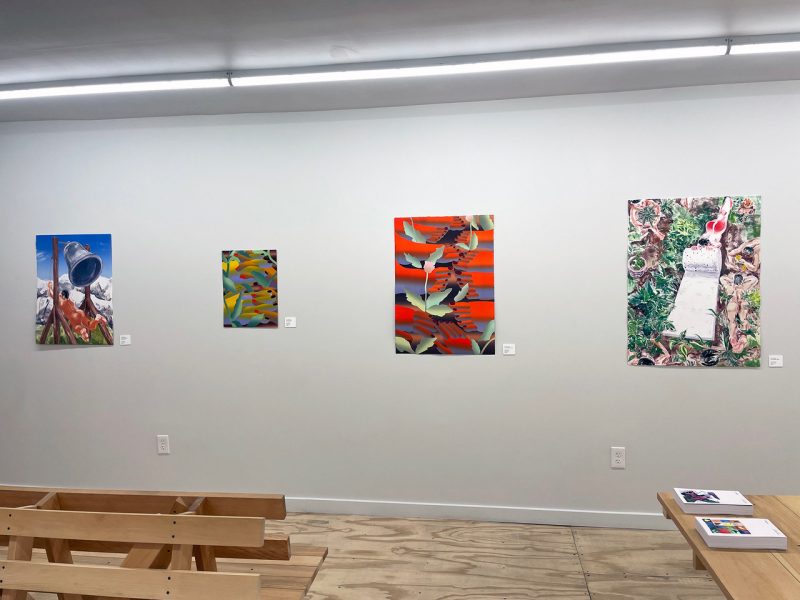
EJ: How do you consider art as related to design? What is your most useful tool, digital or otherwise, for building the Commonweal brand?
AC: I wrote an essay on this very relationship to help define it to myself.”>Here’s the brief overview:
“‘Art’ is a mode of engagement that prioritizes the expressive qualities – content and the manner in which that content is expressed – over the useful qualities – the ability to be employed as a tool in service of purposes beyond itself – of an object or experience. ‘Artwork’ describes the objects and experiences which are culturally constructed to be subject to this particular mode of engagement. An ‘artwork’ is what one engages, while ‘art’ (or ‘artfully’ to make it a proper adverb) is how one engages. Because art is primarily about expression and not use, it is applicable to say that it is a qualitative field of inquiry and not a quantitative one. No quantification of an artwork – size, price, or duration, for example – makes it more art than any other artwork…
‘Design’ is the purposeful engagement of the five major themes of visual representation – color, line, shape, composition, and perspective – to create images and objects that have a specific intended use outside of the arrangement of these themes, through whose use the themes imply. Design may be described as visual engineering because, like other forms of thinking systematically, designers start with a goal – the intended use of the end-product – and by employing a range of tools – the five major themes – affect both materials and ideas towards a formal resolution.”
The most useful tool for building the Commonweal brand is conversation. There’s a bunch of digital work on the backend of developing the brand, but it’s engaging with others and expressing my passion about the function and operation of the gallery that’s my most important branding tool.
EJ: Are online sales important for your business? Do you participate in art fairs?
AC: The gallery website has an integrated sales channel. When sales occur online it is more likely than not that I know the collector and have dealt with them in person or over the phone prior to the sale. I will be exhibiting Adam Lovitz at The Affordable Art Fair (9/22-25). Booth fees, insurance, hotel, printing, food, incidentals, advertising, and travel amount to about 9k. My goal is to at least recoup that cost for my first art fair.
[Editor’s Note: Elizabeth followed up with Alex to ask how the art fair experience went. The paragraph below is Alex’s response.]
AC: The art fair was an exhausting five days, though it is very satisfying to know that Adam’s works have entered some new private collections outside of the Philadelphia orbit. Of the collectors who purchased his work at the fair one was an assistant editor at a Condé Nast publication, one a nationally-recognized ballet dancer who, now in their retirement, works with a major NYC-based American Dance Theater, and there was a couple that are culinary entrepreneurs and run several restaurants in Brooklyn, amongst others. The collectors were a pleasant mix of cultural creatives with business savvy, and I had several conversations about commissioning larger works for homes in both Hudson and the Hamptons, though only time will tell if anything comes of those. I made a little under my costs, though it’s hard to calculate true ROI for an art fair as building collectorship is a process that unfolds over time. I’m happy to have been able to expand Adam’s collector-base and there was a lot of enthusiasm for his thought-provoking images that exist in that liminal space between abstraction and figuration where the formation of “the real” is developed and debated.
EJ: Are there other parameters for Commonweal besides showcasing Philadelphia artists?
AC: If I wasn’t showing Philadelphia artists, I’d be just another commercial gallery. I don’t have a specific aesthetic and am not tied to trends, styles, or mediums. However, I and the artists I represent are of a place and time in history, and to be ignorant of trends in the contemporary art market and greater visual social space would be an exercise in ignorance. The gallery is focused on art with a socially progressive stance – one that questions the state of things as they are and offers paths forward. I look for art that is generous, that gives something to an audience. What the artist has to offer might not always be what the audience wants, but that’s not the point. In that generosity there is grace.
EJ: How do you usually source artists for shows?
AC: Luckily, I’ve been a part of this mercurial, vigorous, and exciting art community for almost a decade and a half. I’ve seen the flash-in-the-pans, the slow burns, the self-avowed superstars, the snark faces, the opportunists, the under-informed and over-confident, the community cornerstones, the smoke without fire––and for that matter the fire without smoke––the indolent, the distracted, the uncanny, the unknown, the obsequious, the zealous, the hermetic, the talented, the skillful, the unique, the unexpected, and everything above, behind, and in-between. Because of my exposure, I can tell about five minutes into a studio visit approximately what combination (because no one is just one character but a carefully curated construction of many) I am dealing with. I have a decent understanding of which combinations tend to work in accomplishing the job of being an artist. I want to work with artists whose works reflect the capacities of our shared humanity in a way that is generous and gives points of entry to an audience to do the same. I’ve gone on 168 studio visits since the beginning of 2020 and am always trying to see more. Being surprised is the best.
EJ: Regarding the Todd Strong and Kat Richards show: what inspired you to exhibit their works in a mixed format instead of separated?
AC: I worked with both artists curating the show and while we toyed with the idea initially of separating them and placing each one’s work on a wall, it just turned out to be more generative to the thematic content––the queer body and embodied queerness––when they were hung together. No inspiration required: just a shared pragmatic sense of what would be the most conducive to the exhibition’s goals.
EJ: Do you have a personal art collection?
AC: Yes, and I thoroughly admit that I own too much art.
EJ: How do you engage with the Fitler Club? How is it useful?
AC: I really enjoy being a member of Fitler Club. There’s no getting around that it’s bougie as hell, but it’s filled with individuals who are working damn hard in their respective fields, which I love learning about. There’s nothing more exciting to me than impassioned people making headway. The fact that the club’s focus, and that of its members, is on Philly is great. I’ve had some of the most insightful and meaningful conversations I’ve ever had in this city at FC by just meeting random people at the bar, the workspace, or the gym.
I am the co-lead of the Next Generation (NxG) Arts, Style, and Culture cohort at the club and as such am working with my cohort to develop programming that looks at the intersection of our interests and the interest of other cohorts under NxG such as healthcare, finance, peer mentorship, and more.
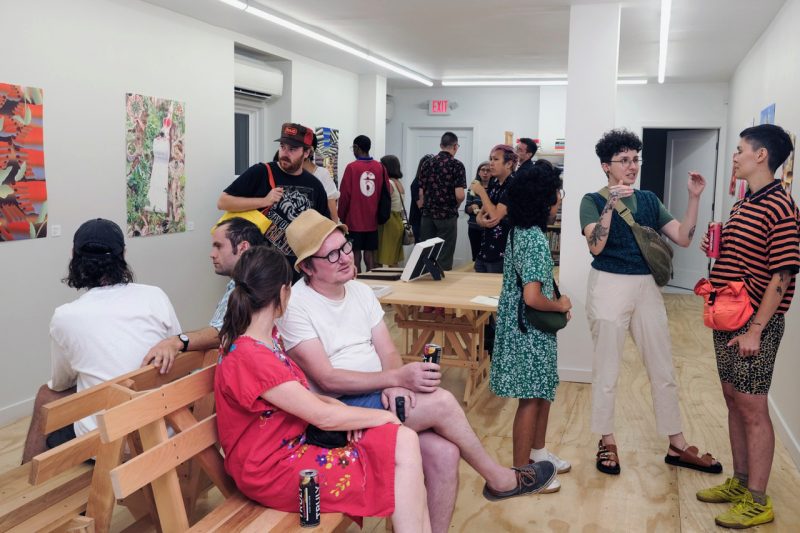
EJ: If a philanthropist gave you $1 million dollars, how would you spend it on the Philadelphia arts community?
AC: Invest it with a capital management firm and aim for 6% annual returns. Reinvest half of the returns into the fund. Use the resulting (initially) 30k to fund a project that has a K-12 student (under 18), an artist (aged 30-50) and a senior citizen (aged 65+)––all of whom are from different parts of the city and have submitted their names, and which have been chosen at random––to develop a project during the late-winter/spring, along with the assistance of a PMA Modern & Contemporary PhD Fellow and a leader in the Philadelphia business community. The culmination of this project would be exhibited/performed/take place in the three creators’ communities during the summer. This would be free for anyone to experience. Each year the value of the fund would hopefully increase, and the cross-generational projects could grow larger.
Funding Breakdown:
$5k K-12 Student (held until they are 18) Pay (expectation of 50 hours of participation)
$5k Artist Pay (expectation of 50 hours of participation)
$5k Senior Citizen Pay (expectation of 50 hours of participation)
$8k Project Materials & Production
$2k Advertising
$2k Transportation / Installation / Incidentals
$3k Cost-Overrun Fund
EJ: Wow. Great proposal. Is there a philanthropist in the audience? What is your five-year plan for the gallery?
AC: To continue to go on studio visits with artists both new and old to me. I want to continue to build the collector base of the gallery and have satisfying exhibitions. More of what I am doing now, frankly. This is a marathon, not a sprint. I am currently not representing any artists but starting in year three I would like to refine a short list to begin to represent on a regular basis.
EJ: We talked in person about a lack of art writing and criticism in Philadelphia. This brought up a lack of rigorous critical thinking among artists and a tendency towards conservative collecting in general, negatives that are difficult to discuss. Can you summarize your opinion of these uncomfortable but related topics?
AC: I do not think that Philadelphia artists avoid rigorous critical thinking. Rather, I think that Philadelphia artists do not express their critical thoughts and beliefs externally in a constructive way that allows for proactive discussion amongst peers as well as outsiders to the art scene regarding the qualities therein. I feel this approach arises out of a worry that espousing a critical point of view which others may disagree with opens an individual to being de-relativized. Criticism cannot thrive because everything must be “good” to stay in the larger art community’s good graces. In a city where everything is “good” nothing can be great.
To speak to the question of collector conservatism, I don’t think collectors are conservative. I believe the problem is that our art community is often talking at them and not with them. Collectors are people too and I’ve found that 98% of the time they are genuinely interested in the shared human experience that the best art evokes, but they need to be offered points of entry as this isn’t their field of inquiry. As such, collectors deserve the same amount of empathy and labor in working through art topics which can be difficult and abstract.
I will be the first at the barricades to defend difficult art. However, I think it’s important to make the point that if the focus of an artwork is incapable of being explained effectively to someone outside the field in a way they can understand and appreciate, it’s on the artist and their community to think about why that is and the value (or loss of value) such a situation represents. Art is messy because we are messy and art is simply a reflection of some aspect(s) of the human experience that artists have harnessed and paused in a state of thoughtful reflection. To explore art takes not only a willingness to know more about ourselves and others but also the vulnerability of admitting how much we do not know. It’s tough stuff.
LAND•PRESSURE•BODY is on view at Commonweal Gallery through Saturday, October 15th.1341 North Mascher Street Philadelphia, PA 19122 [Address Updated – Oct 2024]
Visit Philly Stewards and sign up for their weekly newsletter! – UPDATE Sept 2023 – Artblog has taken over Philly Stewards and renamed it ArtblogConnect.org. Post your events and signup for the newsletter.
For further information about three of the artists mentioned in this interview, see Artblog coverage of Alex Rosenberg, Adam Lovitz and Emilio Maldonado.


